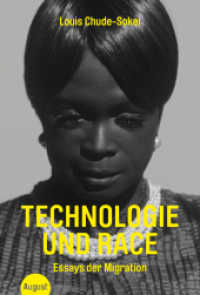Full Description
In this book, the authors embark on a critical investigation of the complex field of Chinese language education, with a particular focus on exploring new trends and teaching and learning. They delve into the intricacies of language, education and its effectiveness in teaching Chinese as a first language.
The book has three objectives: establishing a field of study in Chinese language learning and teaching, providing critical discussion and progressive insights on language education, and offering relevant pedagogical perspectives of learning and teaching Chinese as L1 and L2. The chapters investigate learning and teaching of Chinese in different aspects, including four skills, culture, literature, technology-assisted learning, and learners' identity. By focusing on the teaching practices of Chinese at different levels, it sheds light on teaching Chinese as a first language. Theoretically, it broadens the linguistic and geographical reach of previous works on language education that mainly examine English as a lingua franca or children's first language acquisition. Drawing upon theories in language learning, the book demonstrates the applicability of language theories in the first language and Chinese as a non-alphabetic language and examines the impact and effectiveness of some theories in Chinese learning and teaching.
Academic researchers, teacher educators, teachers and students interested in Chinese language and education will find this a highly relevant text for its focus on curriculum, pedagogy and assessment of teaching Chinese as a first language.
Contents
1. Introduction Part One: Teaching Chinese in Greater China 2. A Review of the Development of Language Teaching and Learning in Hong Kong in the Past Fifty Years 3. New Trends in Mainland China's Language Teaching Development 4. Analysis of the Key Learning Contents and Performance Indicators of the Mandarin Curriculum and Teaching in Taiwan Part Two: Chinese L1 Curriculum, Pedagogy, and Assessment 5. Differences in the Relationships between Executive Functions, Reading Engagement and Reading Comprehension between Primary Students from Grade 3 and Grade 5 6. Integration of Poetic Prosody for Effective Digital Chinese Teaching 7. Perceptions of Motivational Strategies Among Pre-Service Chinese Language Teachers 8. Technology-enhanced Chinese language teaching and learning Part Three: New trends in Chinese L1 learning and teaching 9. Innovative Practices of Teaching Classical Chinese Vocabulary: from Etymology to Semantic System 10. Life and Moral Education and Chinese Language Education: Trends and Prospects in the Greater China Region 11. Transprofessional identity of L1 Chinese language teachers in changing multilingual contexts 12. Towards Promoting Diversity, Equity, and Inclusion (DEI) in Chinese language teaching: Insights from Hong Kong





